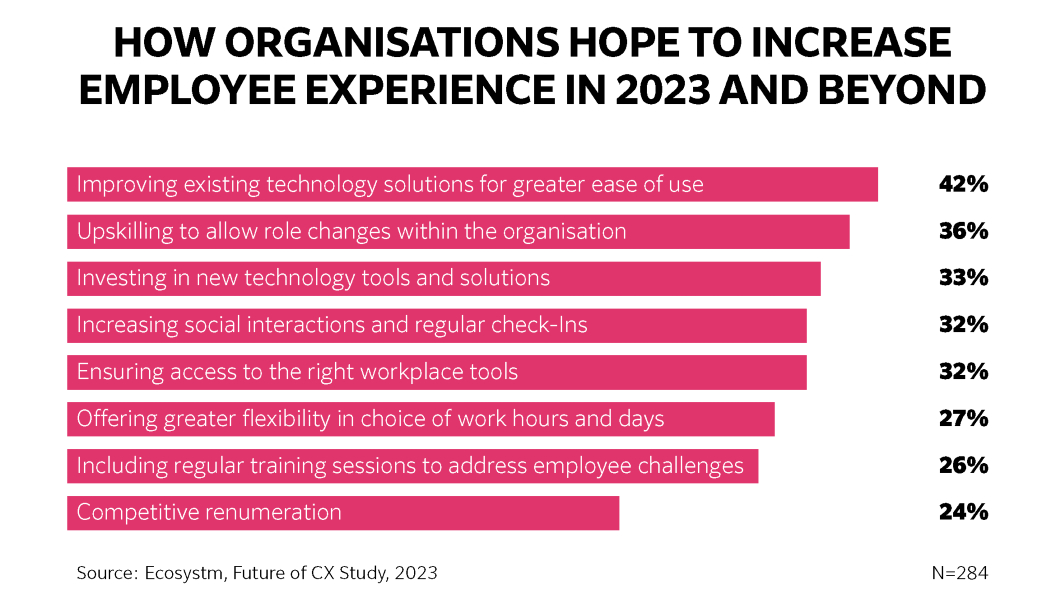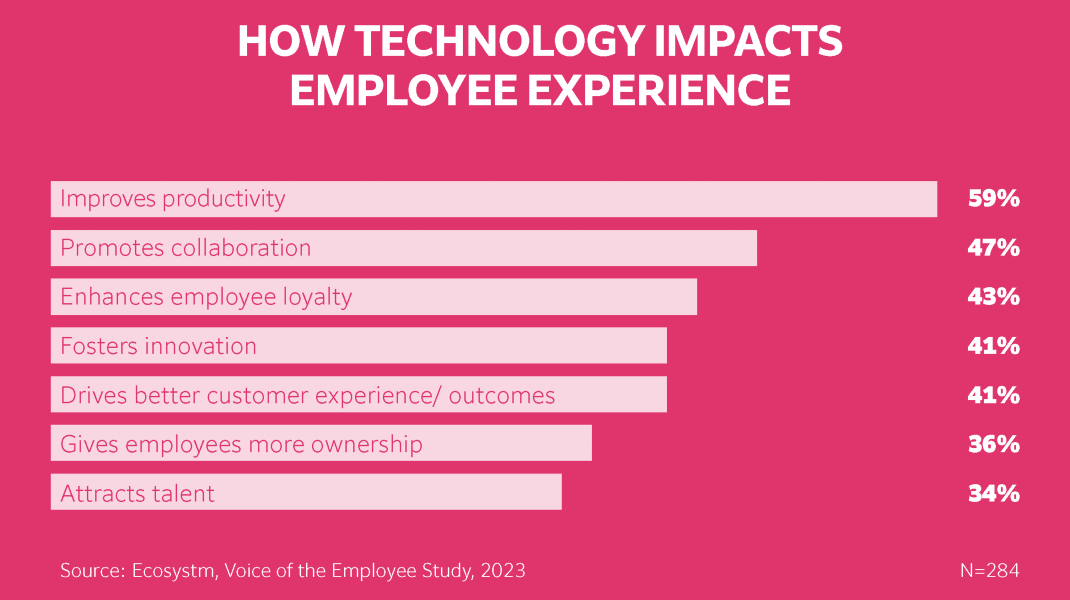In today’s unpredictable world, the volatility of the job market is not surprising. The already heavy management’s plate now includes ensuring workforce resilience. In two years, we have seen both the Great Resignation and the Great Regret. What’s next in the world of work and how do you ensure your workforce retention strategy succeeds in delivering workforce stability? 
As technology changes working styles and employee expectations, businesses are prioritising the employee experience with supportive people-and-culture initiatives. At the top of their list is improving existing technology solutions for greater ease of use and investing in new technology, but can this help companies retain their best talent? While competitive remuneration and benefits packages are still important, businesses that improve the employee’s experience at work are making sustainable steps towards workforce resilience.
What is the best way to make work feel less like a daily grind and more about making productive and meaningful contributions? Introduce digital workflows with automation taking care of time-consuming tasks. This frees up employee’s time to solve complex problems with performance work thus increasing their job engagement and satisfaction.
Streamline Processes and Empower Employees
When employees don’t feel challenged or inspired, repeated work becomes a drag and employees leave. According to a poll conducted by Korn Ferry, boredom was the top reason employees looked for other opportunities. Furthermore with “quiet quitting” and “lying flat” becoming evidently more common, it is crucial to re-engage and invigorate your current workforce by improving their EX in daily tasks. 
This may require initial investment in digital solutions but in the long run, these early investments prove to be more sustainable than having to constantly recruit new employees.
Tip: Study your annual employee satisfaction survey results. Find out which team has the lowest score in both satisfaction and performance. Start your digital transformation journey (if you haven’t already) with this team and measure your results.
1. Address the most time consuming and manual processes in their current workflow.
2. Get employee buy in and decide on ways to streamline and automate manual tasks.
Enhance Visibility and Transparency
Employees across the region want greater flexibility to choose where and when they want to work. 66% of workers in Asia Pacific prefer a hybrid model of work with only 15% that want to go to the office on fixed days.
However, for employers and C suites to make remote or hybrid models the final design for work, there needs to be trust and transparency. Greater transparency across an organization is made possible by implementing digital workflows and operating in the cloud, whether it concerns whether an employee request is waiting for clearance or whether call centre agents have resolved a customer issue.
This transparency is beneficial to both employers and employees. Employers have visibility of what their employees are working on and employes can see how their work plays a part in the company’s success. When their contributions are visible, feeling a sense of pride in both their personal accomplishments as well as the company’s goes hand in hand, strengthening workforce resilience.
Provide real-time data and insights for informed decision making.
Digitisation and digital workflows benefit your organisation by unlocking the data and information that would otherwise be held in paper documents. It makes it easier for employees to search and access the information at their convenience instead of having to return to the office to retrieve paper documents.
With access to information at their fingertips, employees can make faster decisions and become more effective in their jobs. Furthermore, they would be able to solve customers’ problems and resolve issues faster thus improving SLA performance.
Boost your customer experience (CX) with digital workflows.
Scalability and Adaptability
Once you’ve embraced digital workflows, you’ve built yourself a strong foundation for digital transformation. Scale and adapt new technologies to level up your processes and compete alongside other digitally mature businesses.
By capitalising on Artificial Intelligence and automation, employees can focus on addressing more meaningful business problems. Whether this is to develop innovative products or focus on delivering a unique, unforgettable customer experience, this work is more engaging, and value driven than the manual, repetitive tasks they were doing before.
Tip: Tech advances quickly with new updates constantly being rolled out so it is crucial to provide training even if employees have some digital skills to begin with. Furthermore, this signals to employees that their company is willing to develop their professional capabilities and help them grow.
Enhance collaboration and communication among team members.
Digital workflows allow for clear project assignment, tracking and accountability. Regardless of your team’s work arrangements, digital workflows allow for specifying deadlines and closely tracking project progress. Employees can identify bottlenecks early on and plan their time better. For managers, having a bird’s eye views of all the projects team members are working on and setting up instant alerts when issues arise can also make for more productive time management.
